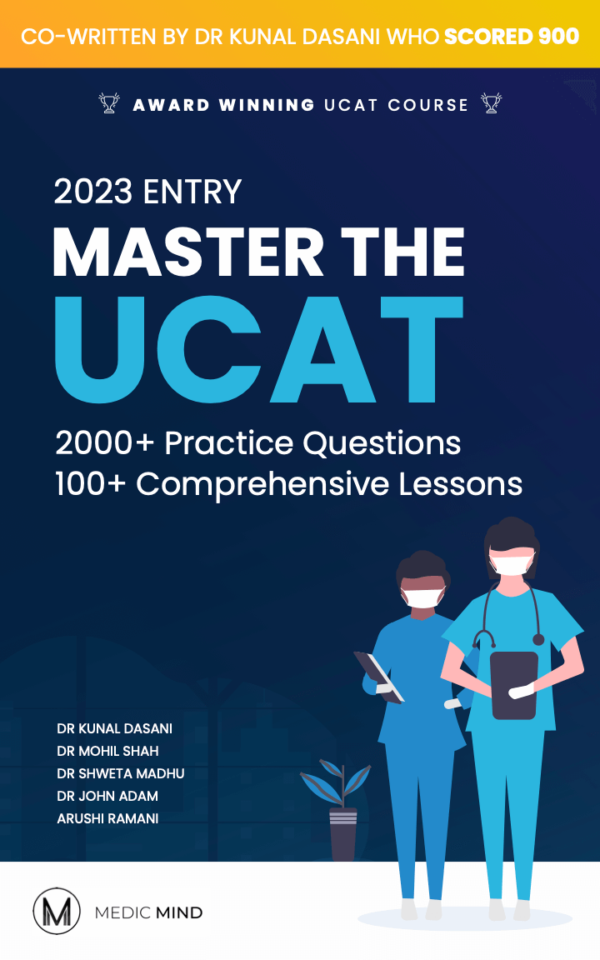Loading...

How to Score Highly in the UCAT Quantitative Reasoning Section
The UCAT (University Clinical Aptitude Test) is a standardised exam used by universities in the United Kingdom to assess the aptitude of students applying for courses in medicine, dentistry, and other healthcare professions. The exam consists of several sections, one of which is Quantitative Reasoning (QR).
Quantitative Reasoning is designed to test your numerical and mathematical abilities. You will be given data sets, graphs, and other information to analyze, and you will need to use your reasoning skills to answer the questions presented to you.
QR is a challenging section of the UCAT, but with the right preparation, you can achieve a high score. In this article, we will discuss tips and strategies to help you do well in the UCAT Quantitative Reasoning section.

Understand the format of the section
Before you start preparing for QR, it’s essential to understand the format of the section. You will be given 36 questions to answer in 24 minutes, so you will need to work quickly and efficiently. The questions are multiple-choice, and each question will have four answer options.
The questions are designed to test your problem-solving and mathematical reasoning abilities, so it’s essential to have a good understanding of mathematical concepts and how to apply them to real-world situations.
Brush up your mathematical skills from GCSE
QR is a math-focused section of the UCAT, so it’s crucial to have a good understanding of mathematical concepts from the GCSE level. You don’t need to be a math genius, but you should have a solid foundation in algebra, geometry, and basic arithmetic. Start by revising these concepts and working through UCAT practise questions and practice tests to test your understanding.
Learn to identify patterns
QR questions often involve analysing data sets and identifying patterns. It’s essential to be able to quickly identify patterns and trends in the data so that you can answer the questions correctly. One way to improve your pattern recognition skills is to practise with different types of data sets, such as graphs, charts, and tables.
Revise under exam conditions
It is essential to practise under exam conditions. Set aside time to work through practice questions, taking into account the time limit and conditions of the UCAT exam. This will help you become more familiar with the format of the exam and develop your strategies for answering questions quickly and accurately.
Eliminate options that you are sure are incorrect
In the QR section, you will be presented with multiple-choice questions. If you are unsure of the answer, exclude options you are certain are incorrect. This can help you narrow down your choices and increase your chances of selecting the correct answer.

Use estimation to your advantage
QR questions often involve complex calculations, but you don’t always need to solve them precisely to get the answer. Estimation can be a useful tool in QR, allowing you to quickly eliminate answer options that are too high or too low.
If you’re not sure how to approach a question, try estimating the answer to get a better idea of what you’re looking for.
Pay attention to the units
When working with data sets or numerical values, it is important to pay attention to the units. Make sure you understand the units used in the question and the answer options, as this can help you eliminate incorrect answers and choose the correct one.
Utilise time-saving techniques
In the QR section, you will have 24 minutes to answer 36 questions, so it is essential to use your time efficiently. One time-saving technique is to read the questions carefully and identify any keywords that may help you solve the problem. Also, don’t spend too much time on any one question, and move on if you get stuck.
Use the whiteboard
You will be provided with a whiteboard to work out your calculations in the QR section. Use this to your advantage and write out any calculations or equations that you need to solve the problem. This can help you keep track of your work and make it easier to spot any mistakes.
Practise your mental maths
Mental maths can be a valuable skill in the QR section. Practise mental maths techniques, such as estimating, dividing by multiples of 10, and multiplying by factors of 5, to help you solve problems quickly and efficiently.
Don’t get stuck on difficult questions
QR questions vary in difficulty, and some questions may be more challenging than others. If you get stuck on a difficult question, don’t spend too much time on it.
Move on to the next question and come back to the difficult question later if you have time. It’s better to answer as many questions as possible than to get stuck on one question and run out of time.
It’s also important to note that QR is just one section of the UCAT. To do well on the UCAT as a whole, you will need to prepare for all the sections, including Verbal Reasoning, Abstract Reasoning, Decision Making, and Situational Judgement. It’s a good idea to create a study plan that covers all sections of the exam and allows you enough time to prepare adequately.
In addition to the strategies discussed in this article, many other resources are available to help you prepare for the UCAT. Consider taking a UCAT preparation course or working with a 1-1 UCAT tutor to help you improve your skills. It’s also a good idea to talk to current medical or dental students and ask for their advice on how to prepare for the UCAT.
In conclusion, the UCAT Quantitative Reasoning section is a challenging part of the exam, but with the right preparation and practice, you can increase your chances of getting a high score. Remember to understand the format of the section, brush up on your mathematical skills, practice, learn to identify patterns, use estimation to your advantage, and not get stuck on difficult questions. Good luck!
FAQs
→ What level of mathematical skill do I need for the UCAT Quantitative Reasoning section?
You will need a good foundation in algebra, geometry, and basic arithmetic to excel in the QR section. It is recommended that you revise your mathematical skills from the GCSE level and practice working through QR-style questions.
→ Can I use a calculator in the UCAT Quantitative Reasoning section?
No, you cannot use a calculator in the QR section of the UCAT exam. However, you will be provided with a whiteboard to work out your calculations and equations.
→ How can I improve my mental maths skills for the UCAT Quantitative Reasoning section?
To improve your mental maths skills for the QR section, practice techniques such as estimating, dividing by multiples of 10, and multiplying by factors of 5. You can also work through practice questions and identify the mental maths techniques that work best for you.
Support for the whole medical application process from UCAS application, UCAT/BMAT, personal statement, interview and more!
With over 1000 UCAT questions, mock paper walkthroughs and timing tips and advice
A unique opportunity to explore the world of healthcare through interactive simulations and real-life case studies. Run by senior physicians
Personalised private lessons, tailored to your UCAT needs





Was this article helpful?
Still got a question? Leave a comment
Leave a comment